CHANGING THE SALES LANDSCAPE: LEVERAGING AI, EI, AND A GROWTH MINDSET FOR SUCCESS IN – FOCUS
WHY YOU MIGHT NOT WANT TO TAKE EVERY TAX DEDUCTION IN – FOCUS
INTERVIEW WITH MELANIE POWERS: PRESIDENT AND CEO OF GOODBERLET HOME SERVICES IN – FOCUS




CHANGING THE SALES LANDSCAPE: LEVERAGING AI, EI, AND A GROWTH MINDSET FOR SUCCESS IN – FOCUS
WHY YOU MIGHT NOT WANT TO TAKE EVERY TAX DEDUCTION IN – FOCUS
INTERVIEW WITH MELANIE POWERS: PRESIDENT AND CEO OF GOODBERLET HOME SERVICES IN – FOCUS




This March, we are proud to dedicate not just one, but multiple issues to the indomitable spirit, resilience, and achievements of women entrepreneurs and leaders across various industries.
Our decision to spotlight these incredible women stems from a deep-seated belief in the power of their stories to inspire, educate, and empower. Each narrative we've chosen to share reflects not only the personal triumphs of these leaders but also their significant contributions to reshaping their sectors and, by extension, our world.
Women have long been the backbone of innovation, creativity, and change, yet their stories have often remained in the shadows. It is our honor at Exeleon to bring these stories to light, celebrating the milestones achieved while acknowledging the hurdles that still exist. Our aim is not only to pay tribute to these trailblazers but also to foster a community that supports and uplifts women in their entrepreneurial and leadership journeys.
Through this series, we invite our readers to delve into the lives of women who have broken barriers, challenged the status quo, and set new precedents. From technology and science to arts and social enterprise, these women have carved paths of excellence, demonstrating what is possible when talent meets tenacity.
But let this not be merely a moment of reflection. Let it also serve as a clarion call for ongoing action and advocacy for gender equality and inclusivity in every sphere of life. The stories we share are beacons of hope and catalysts for change, reminding us all of the work that remains in ensuring that every woman has the opportunity to reach her full potential.
In closing, I extend my deepest gratitude to our readers, contributors, and the remarkable women whose stories we are privileged to share. Your support fuels our mission to not only highlight achievements but also to create a platform for dialogue, learning, and progress.
DARYL YEUNG Editor-in-ChiefEmbracing Excellence
600 N Broad St 5 Middletown, DE 19709, United States +1 302-907-9110
Editor-in-Chief –
Art Director –
Managing EditorCreative Director –Daryl Yeung
Project Manager –Marketing Manager –
Customer Relationship
–
– Business Development
Naomi Lam
Matt Reis Adam Waring
Richard Dann
Sofia Brown
Natasha Green
Matt Hale, Josh Wilder, Anish Miller
For any advertising related information, please contact info@exeleonmagazine.com. Submissions as well as contributions to the magazine are welcome.
Take a moment and let us know about our magazine; whether it be about the design or a possible mistake, we would appreciate any feedback from your end. You can reach out to
daryl@exeleonmagazine.com.
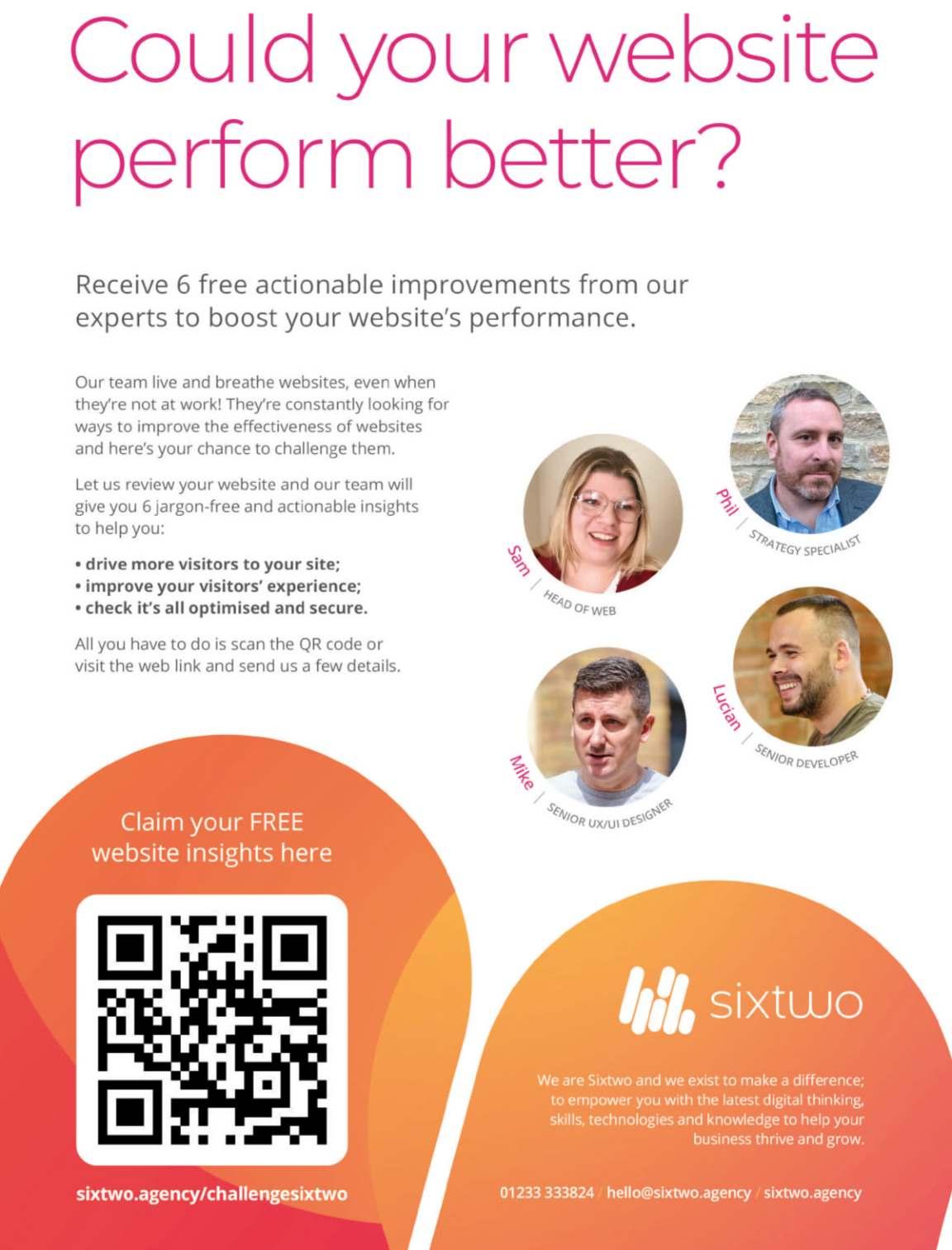



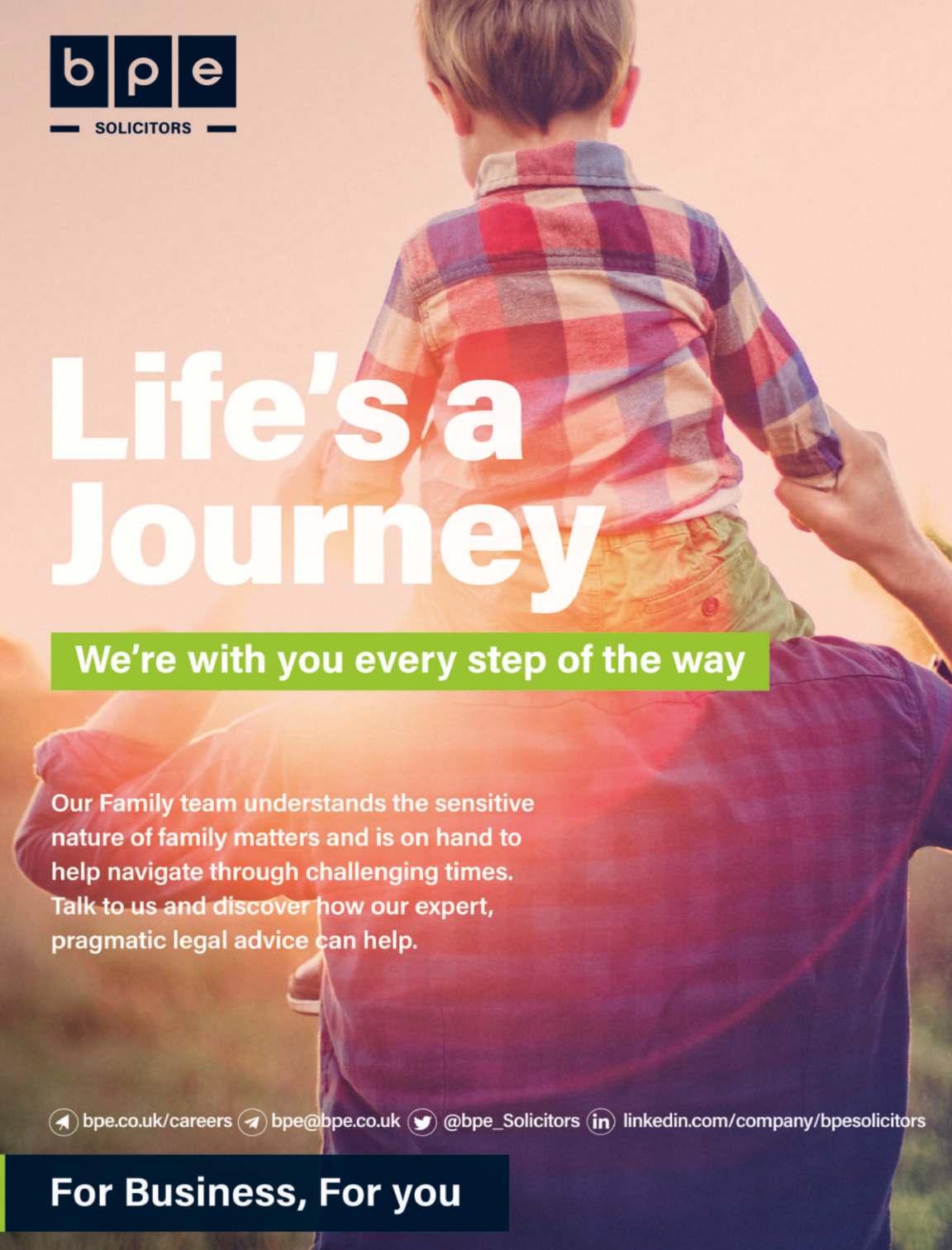





Great stories are timeless. They are passed from one generation to the next, with a �lavor of honesty and authenticity. Stories build human bridges, elicit emotions, and forge bonds that withstand the test of time.
The same goes for design. How things look and feel—their colors, shapes, and textures. Like the comforting hug of your favorite armchair, familiar and inviting. When design is thoughtful, it speaks a language that goes beyond words and �inds a place deep in your heart.
When storytelling and design join hands, they make each other better. It's like when two things come together and create something bigger than you'd expect, 1+1 equals 3. Imagine watching a movie without a musical score; it feels incomplete and lacks depth. That's how important they are to each other.
An example of a leader who excels in blending storytelling and design is Kris Jones. With over 20 years of experience in the marketing industry, including working with renowned brands like Nike and Adidas, and most recently as the founder of Red Door Designs, Kris has discovered a simple and effective formula for success: clarity leads to prosperity.
In this cover story, we delve into Kris Jones' personal journey, exploring the ebbs and �lows that make her the ultimate innovator.
For Kris, storytelling wasn't just an interest — it was her calling. She shares a memory when, at the age of 7, she convinced her neighborhood friend to engage in a creative adventure.
Together, they crafted a trifold vacation brochure using her

mom's stack of National Geographic magazines. “We cut out photos of exotic cheetahs, jungles, and beaches… Then we collaged them onto an 8.5 x 11 piece of paper and folded it into 3 panels — and voila!”
This early experiment of visual storytelling was an innocent foreshadowing of her future career path in design.
Kris Jones's journey into marketing and design began with a sense of adventure and a desire to
"I used to help people build beautiful websites, now, my greatest joy comes from helping them build effective websites that tell a powerful story.”

explore the world. After completing college, she embarked on a backpacking trip that led her to a picturesque beach town in southern Turkey.
It was there, amidst the beauty of the coastal paradise, that she met a pair of Australian designers who introduced her to the industry of marketing and design.
This encounter sparked a profound interest within Kris, and upon her
return to Portland, Oregon, she decided to pursue her newfound passion by enrolling in design school. She shares, “The moment I stepped into that �irst class, something clicked. I knew for the �irst time in my life, I was exactly where I was meant to be.”
For Kris, the next few years were a blur of living and breathing design. It wasn't long before she landed a gig at a local design �irm, worked her way up to becoming an art
director in an ad agency, and eventually landed a once-in-alifetime opportunity to work at Nike.
During her time there, she was surrounded by some of the most talented designers in the world. It was a chance for her to learn from the best in the industry and elevate her skills. This experience solidi�ied her passion for design and set the stage to launch her own business.


L Leaving behind the cubicle life at Nike and driven by a desire for greater freedom and purpose, Kris founded Red Door Designs, a Portland-based brand and website design agency specializing in Storybrand strategy.
She was drawn to serving the underdogs of the business world: service providers and small business owners. She found immense fulfillment in working with these passionate professionals who were often overwhelmed by the demands of design and marketing. She adds, “They're the real deal, living their purpose, but often juggling too much and spreading too thin—especially when it comes to marketing.”
Kris shares that the name "Red Door Designs" was inspired by her love for red, which symbolizes passion. In many cultures, a red door represents prosperity and a warm welcome, embodying the values she wanted her business to stand for. Her goal was to help her clients thrive while ensuring their experience felt like a warm hug, rather than a daunting project.
Even after twenty years, Kris's principles haven't changed, and her mission remains the same: to help every client she meets grow their business easily and make the experience of getting there enjoyable.



“Storytelling is my calling. I’ve always been a visual storyteller.”

During the early days of her entrepreneurial journey, a beautifully designed website was all any business needed to thrive. Yet, as the online landscape evolved, just a pretty design wasn't cutting it anymore, both for Kris's business and her clients.
“I was relying solely on referrals and started to worry about how long I could keep it up. The inconsistent lead �low and unpredictability stressed me out,” she shares. This period of uncertainty enforced the need for adaptability and innovation in her career.
It was during this period of doubt that Kris encountered a turning point with her client, Elyse. Although Elyse was an accomplished writer, when it came to crafting her own website copy, she found herself utterly stuck. The task of translating her vast ideas into engaging website content left her paralyzed. Kris shares, “I couldn't design the site until she �inished her website copy. I desperately wanted to help her write it, but I didn't feel equipped”.
Thanks to Elyse, Kris made it her mission to crack the code on how to write great website copy paired with beautiful design — so this would never happen again. “I dove DEEP into storytelling. I traveled across the country to attend workshops, I read countless books, and I even got certi�ied as one of the very �irst StoryBrand
guides (based on the book called Building a Storybrand by Donald Miller),” she shares.
Kris's dedication to storytelling transformed her approach to website design. Aesthetics were still important, but crafting a clear message came �irst. Design is an essential tool for bringing that story to life. Her clients immediately began to see remarkable results, including a signi�icant increase in revenue, lead calls booked, and close rates. Her own website started doing the heavy lifting of attracting highquality leads, further proving the power of story to accelerate growth.
At Red Door Designs, Kris and her team keep it simple. They offer service-based businesses just what they need to grow, nothing more, nothing less. Their main service, 'The Signature StorySelling System,' is perfect for business owners who �ind it hard to explain their work in a way others can easily understand. Often, entrepreneurs are too close to their work to describe it simply and effectively.
“We’re taking the stress out of marketing and copywriting, streamlining everything into a manageable package that leaves our clients confident and clear.”
“I used to help my clients build beautiful websites; now, my greatest joy comes from helping them build effective websites that tell a powerful story.”
Red Door helps by crafting their Signature Story and turning it into an eye-catching website that appeals to their ideal customers. But they don't stop at websites. They also cover everything else a business owner might need to keep things running smoothly and pro�itably, like help with social media, video scripts, and sales funnel planning.
Unfortunately, many business owners don't realize how important it is to connect emotionally with their customers. The truth is, that customers usually choose the business they feel a connection with, not necessarily the most quali�ied one. That's where storytelling shines. It's a powerful tool that Red Door uses to build trust and create connections like nothing else can.
Kris feels more energized than ever about her work at Red Door Designs. Their core service will always be 'The Signature StorySelling System.' It helps clients craft a clear story and use it to drive remarkable growth. Her passion for the craft keeps growing, and she's excited about what's to come.
Kris's new book, ' One Page, Endless Pro�its The Busy Entrepreneur's — Guide to a One-Page Website That Converts Visitors into Clients ,' offers a roadmap for business owners. It transforms their frustration with an ineffective website into con�idence with a page that tells their brand story and attracts new clients.
“We're taking the stress out of marketing and copywriting, streamlining everything into a manageable package that leaves our clients feeling con�ident and clear,” Kris concludes.

Re�lecting on her more than two decades of experience in marketing, Kris has seen unimaginable changes, especially in how stories are told. “Back when I started, the conversation rarely touched on story. It was all about the aesthetics: eye-catching designs and memorable visuals were king. A beautiful design paired with a catchy headline! That was your golden ticket.”
Yet, over time, the digital landscape became more saturated and competitive. Marketers realized that having a beautiful website was no longer suf�icient to stand out. The industry began to shift towards storytelling as a crucial element of marketing. It became evident that story was not just important, but essential for differentiation and establishing a deep and authentic connection with the target audience.
Kris adapted to this change by pivoting her approach. She started to view design not just as an end in itself, but as a powerful tool to bring stories to life. The narrative became the driving force behind her designs, rather than an afterthought.
Photo Credits:
Brian McDonnell Photography www.bmacstudio.com
This shift in perspective has fundamentally altered how marketing professionals, including Kris, serve their clients. The emphasis is now on crafting compelling stories that resonate with the audience, using design to enhance and communicate those stories more effectively.

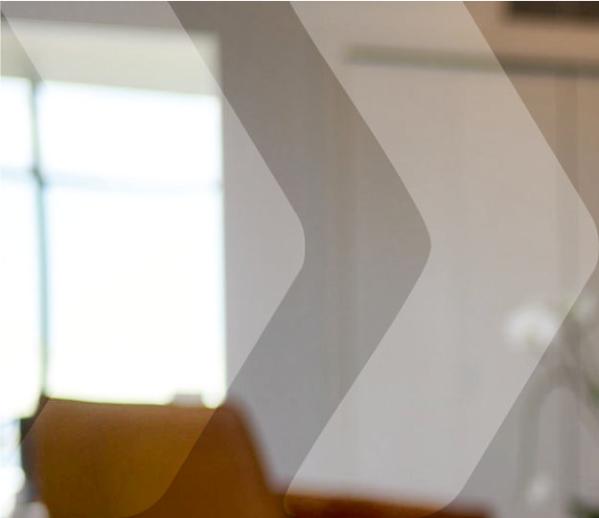
One Book Entrepreneurs must read: One Page, Endless Pro�its by Kris Jones and Building a StoryBrand by Donald Miller
One Line to Describe Innovative Leadership: Innovative leadership involves leading with both empathy and con�idence. It's earned by meeting people where they are, not where you think they should be. It's about showing them what's possible, and then inspiring action that guides them down a simple path to success.

One Quote that Motivates you the most: Simplicity is the ultimate sophistication. — da Vinci
One Advice for Women Entrepreneurs : The world need to hear the story that's inside of you. Take the time to uncover it.
One Marketing Tip that you always Follow : Never make yourself the hero of your own story.

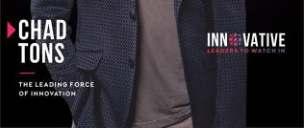
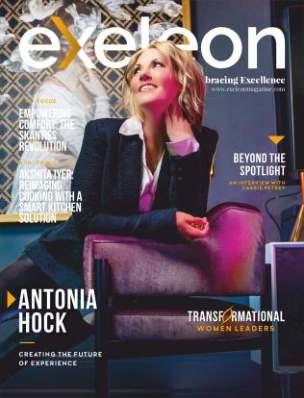










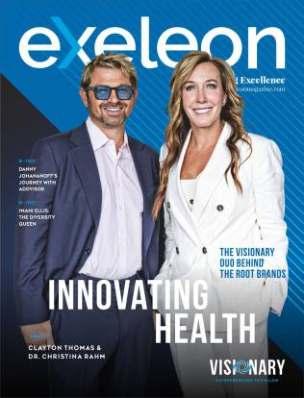




President and CEO of Goodberlet Home Services
eet Melanie Powers, a trailblazer in the home services space and the dynamic President and CEO of Goodberlet Home Services. With a background that bridges interior design and technical sales, Melanie's journey from Columbia College to the helm of a leading home services company is as inspiring as it is unique.
In this exclusive interview, Melanie shares the challenges she faced as a woman in a male-dominated �ield, her strategic vision that fueled Goodberlet Home Services' exponential growth, and her commitment to fostering a culture of excellence and innovation.
Can you share your journey from studying Interior Design at Columbia College to becoming the President and CEO of Goodberlet Home Services?
The careers offered to people starting out in design, at that time, were low paid with no bene�its. I needed to be able to support myself and I wanted bene�its like health

insurance. So, I set off on a different course and went into sales and ended up in software and hardware sales. I enjoyed the technical side of the products I was working with, but still wanted to do something in the building trades, so I took a position as an HVAC project manager.
As a female leader in a predominantly male industry, what challenges have you faced and how have you overcome them?
The �irst challenge I faced was getting a path into the building trades. As young women being presented with career options, these types of trade jobs are only offered to men. Luckily, I interviewed someone in HVAC that saw my technical sales skills as an asset.
Once I began the position as a HVAC project manager, I faced male customers that would refuse to deal with a woman, or other men working in the industry that would ask me why they would send the secretary to a boiler installation class, or they would assume that my dad or husband owned the company, because they couldn't imagine a world where a woman could earn the position on her own merit. I just kept pushing forward, working and taking as many classes as I could to improve my knowledge.
Under your leadership, Goodberlet Home Services experienced a 600% growth in revenue. What strategies did you implement to achieve this growth?
When I assumed the position as president at Goodberlet Home Services, I saw a gap in the services we were providing. Many of our HVAC customers also had plumbing and electrical needs. We began �illing in and providing those services. We also expanded our territory to cover all of Chicagoland and just recently into Indianapolis.
How do you see the role of women evolving in the home services industry?
I see the role of women expanding in HVAC with groups like www.womeninhbacr.org. There is still a long way to go as only 1.5% of HVAC jobs are held by women according to the U.S Bureau of Labor.
In what ways do you foster a culture of excellence and innovation at Goodberlet Home Services?
Our company culture is family oriented. We want our people to provide exceptional service to our clients, but to do that, they need to feel that they have work/life balance. We offer �lexible schedules so that our employees
can take time out for their families when needed. We want them to be able to coach their child's baseball team or attend a school play. Working in home services can be a demanding career, as you are always responding to emergencies, and we want to make sure our employees have time to also take care of themselves when needed.
What are your long-term goals for Goodberlet Home Services, and how do you plan to achieve them?
Our long-term goals are to continue to grow our market share in greater Chicagoland and Indianapolis. We offer a solid solution to home mechanical needs. Our staff consists of knowledgeable professionals with decades of experience in plumbing, heating and air conditioning, and electrical services. We intend to facilitate that growth by continuing on our path of excellent customer service, staying at the forefront of new technologies and providing our employees with the tools to succeed.

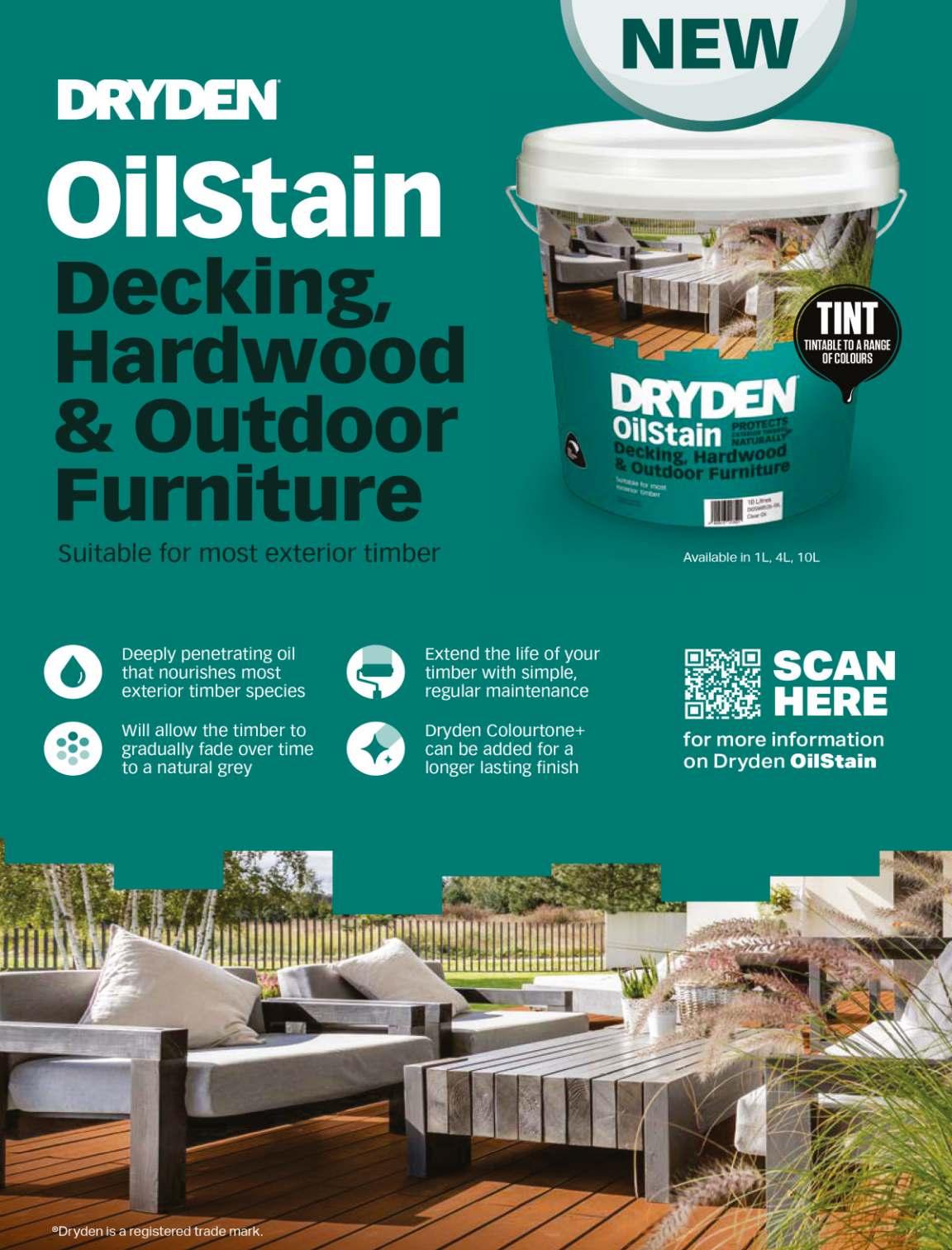

We live in a fast-paced world, where the days seem to �ly by. Everyone seems to be always on the go and extremely busy. We want everything now, and our patience is quickly fading. Our phones have become an extension of us, and we live more online than we live in the present. Self-care has never been more vital, yet it often seems like a luxury that we can ' t make time for or can scarcely afford.
this is where technology and traditional wellness practices are starting to merge; because if you can ' t beat them, you have to join them. This merge is not just convenient, since we all seem to live on our phones these days, but it also makes it easily accessible and effective in bringing self-care back into your daily life.
From the beginning of time, self-
care and wellness practices have deep roots in traditional forms of healing. The Romans used to spend hours at the Roman bathhouses engaging in a series of hot and cold baths, steam rooms, massages. Native Americans put on various physical and spiritual healing ceremonies for an entire day or half day, their entire village would participate. In Ancient China and still today, they practice Qigong and Tai Chi. Although both are very different, they require immense concentration, controlled breathing, and movement to help maintain health and spiritual balance.
Some of these practices, though effective, often require time, space, and a certain level of expertise to implement. However, in current times, we don ' t lack that time; instead, we have become more fastpaced and highly stressed. Because of this, it demands a more innovative solution where wellness
can be seamlessly introduced into our daily routine.
Merging technology and traditional wellness practices offers an innovative way to make self-care part of your daily routine. Having easy access through an application on your phone or a subscription on your TV or computer allows you to access it anytime, anywhere. Some wellness applications offer personalized meditations, guided breathing exercises, and workouts directly for the user. Plus, with products like wearable technology & smartwatches, technology has elevated our �itness tools as they can now monitor our heart rate, track our steps, analyze our sleep patterns, record our stress levels & so much more all from our wrist!
Even everyday jewelry is getting an
upgrade! DiscoverOmnia.com a tech jewelry company founded by me, has created a crystal bracelet using NFC technology that connects you with a web application called Elevate.
Elevate is a wellness hub that offers over 200 pieces of self-care content like journals, breathing exercises, meditations, wellness exercises all tailored to the themes of their handmade crystal bracelets—Calm, Joy, Love, and Inspired. By tapping the NFC charm to your phone, users are connected to a resource that supports their emotional wellbeing, seamlessly integrating traditional healing elements with cutting-edge technology. Plus, Elevate can be accessed not just on the phone but soon the computer as well.
One of the most popular advantages of merging technology with wellness is the ability to personalize self-care. Smartwatches that track your steps or remind you to stand up after sitting for too long are revolutionary in helping people stay healthy.
With the vast improvements in AI, we now receive customized recommendations for meditation and exercise. This saves us time searching for things we might like or dislike. Being able to interact with AI to get a customized nutrition plan or exercise routine based on our preferences and goals is groundbreaking. This level of personalization increases user engagement, keeps us motivated, and enhances the effectiveness of our wellness practices.
With growth and evolution come new challenges. The most apparent is privacy concerns, mainly with companies collecting personal health data and selling it to other companies. Additionally, our reliance on technology, as previously mentioned, becomes an extension of us, leading to a disconnect from the real world.
Constantly being on our phones takes us away from the present moment, connecting with those around us, and engaging in critical forms of self-care like being outdoors and active, which could signi�icantly decrease. We are already witnessing a serious decline in outdoor activities. Moreover, the way we communicate has shifted to be less face-to-face and more through our phones or computers.
An often-overlooked aspect of wellness is the role of community. Humans are social beings who thrive on interaction. It energizes us, allows for the spread of ideas, fosters deeper meaningful connections, and gives us a sense of belonging, which fuels our life force. The upside of technology is that it allows us to connect with people across the globe.
Online forums, virtual wellness groups, and social media platforms foster a sense of community and bring support and inspiration to individuals pursuing their self-care and wellness journey. This is particularly bene�icial for those who might live in areas without access to activities like Kundalini
yoga or breathwork classes. They get to explore their interests while also connecting with like-minded individuals, making them more likely to commit and stick with it.
It's clear that technology is here to stay, and the integration of self-care and wellness into various technological platforms will only continue to evolve. Innovations like those introduced by DiscoverOmnia.com mark a step forward in this journey, offering a glimpse into the future of self-care. Soon, we will add 360 meditations where you can hear sounds from all around you, not just from the right or left.
Gyms like Planet Fitness have introduced wellness pods where you can do breathing exercises and meditations while watching a video that transports you to another location, complete with scent sprays to immerse you fully into that reality. We'll see an increase in virtual reality meditations. The iPhone's latest update includes a journal application, another gamechanger for self-care. You can add photos or videos of your day, share entries with others, or follow the journaling prompts it offers.
By merging self-care with modern technology, we now face a future where self-care is not just a luxury but a seamlessly integrated part of our daily lives. It's easily accessible and something we can do anytime, anywhere, empowering us to live more balanced, healthy, and peaceful lives.

Gina Casazza is the founder of the tech jewelry ecommerce company DiscoverOmnia.com. She created the company after wanting a product to help her to control & regulate her emotions. She is also a children ' s author (You Really, Truly Do
Belong), Podcaster (Mindset: Lessons from the Field) & Filmmaker. She is constantly bettering herself & lives by her company's slogan: Elevate Your Life.


The American Dream” is
widely heard in big speeches and is a selling point for the public to aim for big and avail the opportunity of becoming successful. However, over the years, the American dream has become a nightmare for young adults, especially millennials and Gen Z –leading to the downturn of the American Dream.
The general trend among the younger generation is to acquire as many 'assets' as possible. While this releases dopamine and creates a sense of achievement in their minds, it is essential to realize that the American Dream has been de�ined only in terms of material possessions, encouraging Americans to go beyond their limit and eventually face a �inancial crisis.
Since 2014, the average household income has decreased by $2000 in middle-class families, with an average household debt of around 130% of the salary. Alarmingly, the household savings rate is nearly zero!
The last great recession happened in 2008 that had a lasting impact on Americans. Millennials are drowned mainly in student loan debts; unfortunately, the median income is the same as in the 1970s, after considering in�lation. Although a lot more people are employed today compared to the 1970s, still a fewer percentage of them own their houses. Even so, a third of them are currently living with their parents.
We'll discuss some factors that correlate with the lack of
homeownership among young adults.
If you're aware of the Great Recession of 2008, you must know what a housing bubble is. For those looking to investigate this matter, let's make it simple for you to understand. As the house demand increases, the prices follow an upward trend. This is exactly what a housing bubble is.
Giving a brief history lesson, investors shied away from stock investments and turned to economical mortgage rates, increasing the demand for st property at the start of the 21 Century. Also, to incentivize nonstock investments, fewer regulations were put in place, which implied that a high income was not required to get a mortgage; however, the turmoil was not anticipated as those payments accumulated with interest rates rising at the same time.
The investments were such that when the buyers couldn't pay, the lending organizations went bankrupt, and the lending structure crumpled.
This proved to be one of the primary reasons for the slowdown in the real estate market. Even as America regained control of its economy, property building did not become as normal as it was.
In the modern era, property prices are insanely high. Additionally, the average household income is failing to maintain a constant ratio with the rising prices. According to bankrate.com, the median price of houses grew 30% as opposed to an 11% increase in median household income in the last ten years.
At the time, homebuyers enjoyed the privilege of property costs �ivefold the mean salary. But after the market collapse in 2008 – aka the Great Recession – that ratio increased to sixfold, that stabilized eventually. Recently, the average property costs have soared again and are seven times greater than the average household income.
For instance, the national median home price was around $121,500 in the 90s. That was around twice the average income of around $50,000. Whereas in 2020, home prices rose close to $359,000 while the median income is limited to around $67,500.
This is one of the reasons why the younger generation is �inding it extremely challenging to buy a new property in the current era.
As of now, the millennials are the most populous adult generation, outnumbering boomers in 2019. As the population of these young adults increases, the need for homeownership grows simultaneously. To give some perspective, before the COVID-19 pandemic, homeownership was ever-increasing among millennials.
On the other hand, the older generation have kept their ground and continued residing in their old homes. This creates a negative supply and an increasing demand for houses as fewer homes are sold in the market, and more buyers are looking for relatively affordable homes.
The boomers are also cognizant of the fact that the prices have signi�icantly risen, and taking advantage of that, they are making competitive offers which makes it harder for the younger generation to buy new property.
According to several research, millennials are drowned in college debt which is correlated with a delay in homeownership. If we take in to account the in�lation, the millennials are far behind boomers in homeownership rates.
72% of student debt holders believed their debt would delay them from purchasing a home for several months up to 8 years. More speci�ically, 19% of student debt holders believed their debt would hinder them from buying a home for more than eight years!
Although we saw an increase in homeownership among millennials during the COVID-19 pandemic, there is still a void in homeownership rates that needs to be addressed. To �ill this gap, incentives should be given, such as the Transforming Student Debt to Home Equity Act of 2022. This act provides leverage to students who have cleared their student loans,
such as subsidized mortgage loans, and discounts on government-owned homes along with �inancial aid for making down payments.
Considering the increasing home prices and the harder it is to afford a new place, large �irms and organizations have seen a business opportunity. They have bought single-family properties for rental purposes.
This is not new, but seeing the recent trends and lesser affordability, the phenomenon is growing. Smartly enough, the investors have bought singlefamily homes because that is the type of �irst-time house buyers goes after.
Conclusively, homeownership among the younger generation has a sluggish rate compared to the boomer generation due to the pertinent factors that affect it. We have discussed �ive essential elements that have caused this gap in the market, and we hope this helps you broaden your perspective on the downturn of the American Dream.

Michaela Green is a licensed real estate agent with half a decade of experience representing investors in buying and selling property in the Greater Houston area. Through her extensive knowledge of the marketplace, Michaela is able to represent investors in finding properties that produce the highest return on investment. Michaela founded 'The Green Collective' in 2022, a company that aligns her core values with her passionforrealestate.Michaelahaswith National Assistants Ministers (NAM) to help survivors of Hurricane Harvey start fresh by selling their distressed propertiesandhelpfindanewhomes.

In a world where AI is evolving faster than most can imagine, where writers are getting laid off in droves, lawyers are minimized, and the worry that AI will replace 2.4 million jobs by 2030, according to Tech.co, there is still a real opportunity to adapt.
In an industry where antiquated methods are still at large, and where understanding how our mindset works to help us succeed is largely ignored, lies an opportunity for massive change.
The problem is that most people don't know how to leverage a technology that gets smarter with every input and every stroke of a key, or how to manage their emotions in a way that creates breakthrough after breakthrough, especially in the world of sales.
The notion of 'continuous learning'
isn't merely advisable; it's indispensable, mainly because those who choose to not adapt, clinging to outdated models and mindsets, will �ind themselves hasbeens in a world that has moved on without them. Adaptation is the name of the game, and it's a game that rewards the swift, the agile, and the visionary.
Success was once only measured by the grit and persistence of a salesperson. Yet, here we are, standing on the brink of a new era where AI tools and technologies are not just assistants but core drivers of our sales strategy.
From CRM systems powered by AI that predict the hottest leads to chatbots that provide 24/7 customer service with a personal touch, the game is changing. With
their Einstein AI and HubSpot's chatbots, companies like Salesforce lead the charge, revolutionizing how we connect with and serve our clients.
However, the rapid adoption of AI in sales can be risky. Not because of the technology itself but because of the potential for misuse and the ethical dilemmas it introduces. How do we ensure that AI enhances the customer experience without compromising personal touch? How do we safeguard against biases in AI algorithms that could lead to unfair practices?
Notably, AI is freeing up sales professionals' time, allowing them to focus more on the human aspect of selling. The technology is estimated to save sales professionals an average of two hours and 15 minutes a day, highlighting its capacity to automate manual tasks and enable
professionals to concentrate on more critical aspects of their roles.
History has shown us that humanity can adapt and thrive with every technological advancement. We're not just passive observers but the architects of this new sales paradigm.
Remember that AI in sales isn't about displacing human connection; it's about deepening it. It's about leveraging technology to uncover insights that were previously out of reach, enabling us to serve our customers with a newfound depth of understanding and empathy.
For too long, the sales landscape has been dominated by what many would call 'masculine' traits: aggression, competitiveness, and a relentless pursuit of results, often at the expense of connection, empathy, and understanding—the 'feminine' qualities. But here's a truth that might unsettle some: the most powerful sales strategies emerge from the harmonious blend of these energies. It's not about one overshadowing the other; it's about integration.
The study, conducted by Limbu et al. (2016) and published in the "Journal of Business & Industrial Marketing,” found that when salespeople are good at adapting their sales approach based on understanding and caring about their customers' feelings (empathy), they tend to build
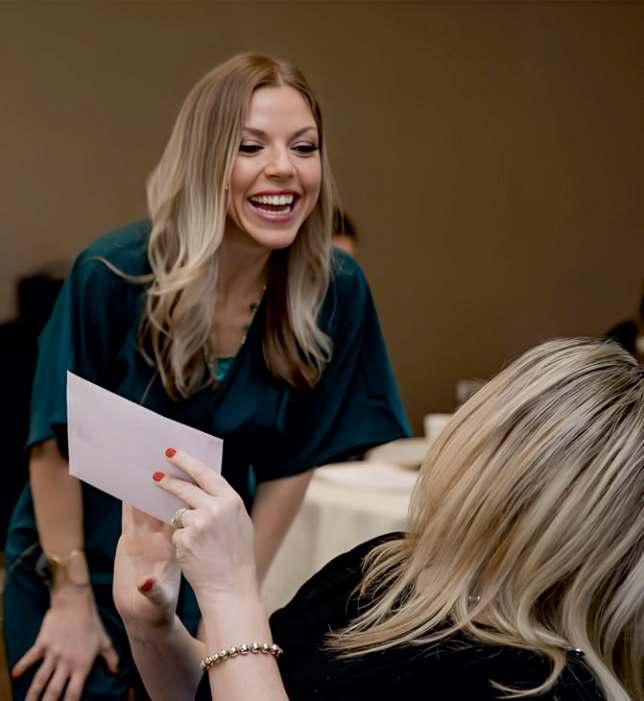
better relationships with customers. Although being empathetic doesn't directly lead to better sales results, seeing things from the customer's point of view improves sales outcomes.
It begins with self-awareness, recognizing our biases and tendencies towards one energy over the other. It's about consciously cultivating qualities that may not come naturally to us but are essential for the modern salesperson. This means stepping into our client's shoes with genuine curiosity, listening more than we speak, and approaching
each interaction with a mindset of service rather than conquest.
The goal isn't to overpower but to understand, not to conquer, but to connect. It's about recognizing that the true power lies in the balance, and by integrating both masculine and feminine energies, we can craft sales strategies that are more humane and in�initely more effective.
If there's one thing I've learned, your mindset is not just a part of
the equation—it is the equation. The psychological barriers that hold us back—fear of rejection, impostor syndrome, and a scarcity mindset—are the real culprits behind stalled sales �igures. These aren't just hurdles but fortress walls that keep us from reaching our potential.
But here's the good news: just as the mind constructs these barriers, they can be deconstructed. Overcoming them begins with cultivating a growth mindset, a concept by psychologist Carol Dweck, who found that individuals who believe their abilities can be developed (a growth mindset) outperform those who believe their abilities are �ixed (a �ixed mindset). This shift in perspective changes everything. Suddenly, each rejection becomes a stepping stone rather than a tombstone on your sales journey.
So, how do we overcome these psychological barriers? It begins with a conscious decision to shift our focus from what we fear to what we can control. We must train ourselves to embrace failure as feedback, to view challenges as
opportunities for growth, and to celebrate every small victory along the way. This is not a quick �ix but a fundamental shift in how we perceive the act of selling itself.
Sam Altman, the head of OpenAI, is excited about how it will improve areas in all types of jobs. He's passionate in his belief that AI isn't about replacing jobs but enriching them, making our daily tasks more creative and ful�illing.
Tech is changing how we sell things so fast it's incredible. But adapting quickly and thinking ahead is crucial to doing well. Adaptation is the name of the game, and it's a game that rewards the swift, the agile, and the visionary.
When it comes to sales, the key to success is being open to learning new things, being able to change, and always trying to get better. Being okay isn't enough these days; you must aim to be the best. This means looking at problems as opportunities, being open to
Elyse Archer is an entrepreneur, thought leader, and international keynote speaker with an extraordinary passion for helping sales professionals, entrepreneurs, and business owners revolutionize their sales approach. As an author and a 3X Salesforce Top In�luencer, Elyse's
advice, and seeing every conversation as a chance to learn something new.
Our mental and emotional states are as crucial as our sales tactics in this new sales era. The energy we bring to our interactions can be the difference between a missed opportunity and a lifelong client relationship. It's about showing up as our best selves, fully present and genuinely interested in the people behind the purchases.
The most successful salespeople will understand that the key to unlocking their full potential lies not in external factors but within themselves. They will be the ones who recognize that a sale is not just a transaction but a human connection and that empathy, authenticity, and a genuine desire to solve problems are their most powerful tools.
insights have been featured in major media outlets, including Forbes and Inc. She is the founder of Superhuman Selling and She Sells movements, which provide invaluable resources for those determined to unlock their potential and improve their income.



As a self-employed individual, you're probably always on the lookout for extra tax deductions you could take to lower your annual tax bill. Most people are, and for good reason! A Gallup poll in 2023 found that 60% of Americans think their federal income tax bill is too high. .
However, taking every deduction available to you isn't always the right call, depending on your �inancial situation and goals. When you apply for a mortgage, for example, the bank will often consider your tax return to be the ultimate record of your income in a certain year. If your tax return shows the lowest possible net income you could legally manage, that will likely hurt your chances of getting a loan. To make matters worse, for self-employed individuals banks will want to see two years of tax returns, and they'll add up your income over those two
years and divide by 24 to get your average monthly income, which they'll use as a basis for determining whether or not to give you the loan.
Unfortunately, if you've been aggressively taking deductions for at least the last two years, you might need to reduce the number of deductions you take for the next two years in order for your tax return to show a higher income number before you qualify for the mortgage or other loan you were hoping to take out. If this is a concern for you and you haven't yet �iled your 2023 tax return, you still have time to make changes before the April 15th deadline.
If you are self-employed and plan on applying for a mortgage in the next two years, it's a good idea to look at the income shown on your
tax return and consider whether you believe it will be suf�icient to qualify for the mortgage you're hoping to take out. If it's not, the good news is that you have options.
While the IRS requires taxpayers to claim all income “from whatever source derived”, there is no matching requirement that they take all deductions they are legally entitled to. If taxpayers leave out a few deductions, either accidentally or purposefully, the result is more income taxes paid to the IRS. They won't complain about that.
If you decide that you want to start reducing the expenses you're claiming on your tax return, where should you start?
I know business owners tend to
claim the entire cost of a vehicle as a business expense, even when they also use the car personally. If this is you, I would consider decreasing the vehicle expenses you claim, and instead of deducting the whole cost, use the mileage rate of $0.655/mile in 2023 or $0.67/mile in tax year 2024. If you haven't been already, this is a great time to start keeping detailed records of your business use of the vehicle and mileage.
Another good place to look if you want to decrease the number of expenses you claim on your taxes is your meals and entertainment line item, especially if it has been high in previous years. There can be some gray areas around this I know, especially when family members are also employed in the business. A family dinner where business is lightly discussed for the �irst �ive minutes might be considered a deductible business expense, but it is also a great place to consider not claiming the deduction.
The home of�ice deduction is another expense I'd consider leaving off of your tax return. You're allowed to deduct $5 per square foot for your home of�ice, but only if the space is regularly and, most importantly, exclusively used for your business. This means that if you also use your home of�ice as a space for hobbies or family time, you cannot claim it on your tax return as a business expense.
Furthermore, in order to claim this deduction, your home of�ice needs to be the principal location of your business. This means that you can't have another location where you perform substantial administrative or managerial tasks for your business.
If you're interested in using this strategy to obtain a mortgage or other loan, the higher net income shown for your business will likely
Katherine Nally is a CPA in the state of Alabama, helping accounting students succeed through graduation and beyond. She provides educational content on her YouTube channel, @YourAccountingTutor, as well as individual tutoring and helpful ebooks through her website, youraccountingtutor.podia.com
During the day, she works with Colliers
increase your odds of qualifying for the mortgage you want, though your total business income isn't the only thing banks take into account. They also consider your credit score along with other factors determined by the speci�ic institution. If you're concerned about your quali�ications, it might make sense to talk with a loan of�icer at your bank to ask how you can be a better applicant and increase your chances of getting the loan you want.
Once you know what exactly your potential lender is looking for, you should consult your individual tax preparer about the strategies mentioned above.
This article is for informational purposes only and does not constitute legal, tax, or �inancial advice. Please consult your own attorney or tax preparer who can provide advice on your speci�ic situation.
International | Alabama as a Senior Property Accountant, providing full-cycle accounting for 20 different commercial properties.
Katherine has 7 years of experience in the accounting �ield, working with varied industries including tax, non-pro�it, construction, and commercial real estate.


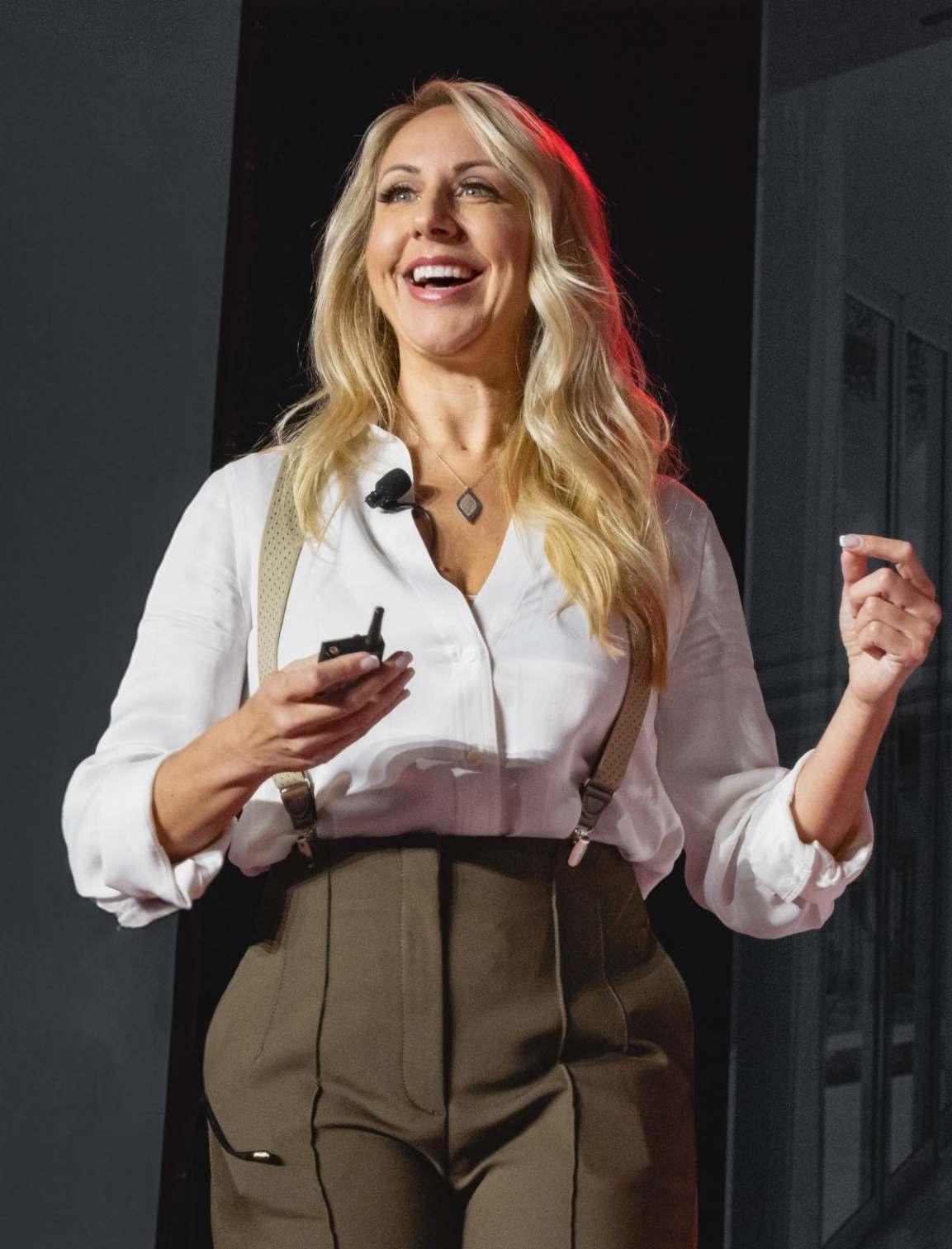











As the Founder of Veri�ied Consulting, Tenyse Williams has carved a niche for herself, impacting the way brands engage with their audiences in the digital space.
In this exclusive interview, we delve into the journey of Tenyse Williams, exploring the roots of her passion for digital storytelling, the challenges she's overcome, and her vision for the future of Veri�ied Consulting.
Brief us about your journey to becoming a leading visionary in digital marketing and the founder of Veri�ied Consulting.
My digital journey began as a teenager in the MySpace generation (Hey Tom!). This pioneer platform was in�luential in setting the stage for social networks today and became my introduction to digital marketing as I got the chance to customize my page with snippets of code and create designs using the barrage of glittering GIFs and music. Even at that young age, I understood the profound realization of technology’s power to connect and express creativity. The art of storytelling beckoned me to pursue journalism with a vigor fueled by the potential of digital landscapes and my �irst position was an internship at Inside Edition.
Discovering this medium was a way for me to have fun but it became my introduction to digital marketing as I got the chance to customize my page with snippets of code and create designs using the barrage of glittering GIFs and music. Even at that young age, I understood the profound realization of technology's power to connect and express creativity. The art of storytelling beckoned me to pursue journalism with a vigor fueled by the potential of digital landscapes and my �irst position was an internship at Inside Edition.
Today, as Founder & CEO of Veri�ied Consulting, we are rooted in the goal of helping businesses grow and �lourish in the digital world. Designing tailored strategies that elevate online presence and increase awareness, our team of specialists are making a difference through purposeful publicity and partnerships for our clients. We communicate through impactful narratives within the digital cosmos making us a leading brand-building, public relations, and strategic media agency.
What inspired you to specialize in social media, in�luencer relations, and brand building?
Connecting people, places, and things is what fuels me and that is
the core of social media, in�luencer relations, and brand building. My mind is always “storyboarding” which has given me the “superpower” to visualize how my clients can connect with each other and �it into situations that will propel them further.
What truly inspires me is the ability to create a buzz, a digital hub where stories resonate, communities grow, and real change happens. I've always been drawn to experiences that leave a lasting impression by tapping the human desire for meaningful and memorable experiences. As a result, at Veri�ied Consulting we innovate and evolve with the digital pulse, fostering unmatched in�luence and brand eminence for our clients. It's about giving a digital dimension to voices and helping businesses, personalities, initiatives, and organizations break barriers to reach a global audience. I �ind my rhythm in crafting narratives that captivate and engage—it's the essence of my work.
As a Certi�ied Minority and Women-Owned Business Enterprise, how do you ensure that Veri�ied Consulting remains a leader in generating measurable results for clients across all industries?
At Veri�ied Consulting, in addition to securing valuable press placements, we are dedicated to emboldening our clients with sustained momentum. What has distinguished us is our commitment to crafting media and partnership strategies that stand out and deliver tangible results.
A prime example of our innovative approach was our collaboration with Samsung when I was invited to join their January 2024 Samsung 837 Live Event as producer, host & moderator. In this multi-role, I brought together prestigious thought leaders in food & beverage from restaurant owners to celebrity chefs for a visionary panel discussion. In a testament to our strategic creativity and ability to yield measurable success, we seamlessly integrated a live cooking demo that showcased the latest Samsung technologies! Further amplifying the impact, each of the participants, including myself, was featured on a Times Square Billboard to promote the event for an exhilarating three days creating an unforgettable brand experience!
Our involvement epitomizes how Veri�ied Consulting elevates brands beyond conventional press coverage by crafting purposeful and memorable experiences that resonate long-term. As a Certi�ied Minority and Women-Owned Business Enterprise, we lead by example, demonstrating the power of diversity in thought and action to drive unparalleled outcomes for our clients across varied industries.
You have worked with notable organizations and initiatives such as The Nelson Mandela Foundation and the BET Awards. Can you share a memorable experience from these collaborations?
One major career highlight happened during the Centennial Celebration of Nelson Mandela for the Nelson Mandela Foundation's “Forever Young Gala.” Tasked with engaging a U.S. audience, I brought visibility to their Mistress of Ceremonies, Enhle Mbali, through a unique and clever social media partnership.
With the goal of maximizing digital reach in partnership with Re�inery 29's Unbothered platform, we bridged the gap between Enhle's social presence and all of the Forever Young Gala accounts. This was done by delivering exclusive behind-the-scenes access featuring luminaries like Dave Chappelle and Naomi Campbell. Orchestrating and executing this collaboration was a thrilling challenge, particularly with the seven-hour time difference between NYC and South Africa, as it required on-the-�ly liaison work to ensure timely content delivery.
Juggling the urgency of capturing the right moments for Re�inery 29 with the Gala's fast-paced schedule was a formidable professional achievement for my agency while being a tremendously rewarding experience for me personally. The day was a whirlwind of activity, but contributing to such a momentous occasion made every second worth it—truly a historical event to remember.
In your opinion, what are the current trends in digital marketing and social media that businesses should be aware of?
In this evolving digital marketing and social media landscape, two major trends for businesses are Arti�icial Intelligence (AI) and Augmented Reality (AR). AI, particularly in the form of chatbots and digital assistants, is
revolutionizing how we communicate with our audience, whether it's crafting compelling copy or responding to direct messages. This automation not only enhances ef�iciency but also allows for enhanced personalization and engagement.
On the other hand, AR—evident in products like Apple's newly launched Apple Vision Pro—allows users to interact with technology more seamlessly, moving away from traditional screens and laptops. Brands need to consider how these immersive AR experiences can be leveraged to showcase their products in innovative ways.
Additionally, the rise of Social Commerce platforms such as Amazon Live and TikTok Shop are increasingly integrating shopping features, transforming the way consumers discover and buy products. Businesses should acknowledge this trend not only for direct sales but also to offer a more seamless shopping experience—increasing the chance of conversions.
These advances and trends offer businesses a unique opportunity to reach and interact with their consumer base, ultimately shaping the future of customer engagement.
What are your long-term goals for Veri�ied Consulting, and how do you plan to continue driving success for your clients?
We will continue to serve clients with the same committed seriousness of purpose to build awareness for their brands through a call to action that strategically positions them for growth. As technology advances, so will we, and our long-term vision will be centered around harnessing

emerging technologies such as Augmented Reality (AR) and Arti�icial Intelligence (AI). We aim to integrate these technologies into impactful experiences and strategic partnerships — uniquely driving exposure and prominence to our client's brands.
Beyond the commercial space, we aim to establish a non-pro�it arm dedicated to aiding small businesses and startups in structuring their public relations and digital marketing strategies. Recognizing that smaller businesses, particularly Black-owned enterprises, often face budget constraints, we see the potential for digital marketing and public relations to serve as catalysts for growth and visibility ultimately transforming these businesses into recognized brands.
In line with our ethos of creating memorable experiences, Veri�ied Consulting will sustain and enhance our strategic approach. We plan to continue building pivotal partnerships within the media and tech industries, curating an engaging narrative for our audience that extends well beyond conventional press releases. Our commitment is to keep propelling our client's stories forward, resonating powerfully within their target markets.
How important is it for you to give back to the next generation?
Very important. For the last four years, I have served as an Adjunct Instructional Specialist teaching Digital Marketing for multiple University programs including Columbia, George Washington, and currently the University of Central Florida. Additionally, Veri�ied Consulting engages the community by hosting workshops to teach college students, young professionals, and startups how to use AI, social media, and other digital marketing strategies.
We were awarded a grant through the One X league to host a workshop with over 50 attendees entitled, “Empowering Voices through AI” in partnership with the ‘NYC Black Women's Political Club to train small business owners on how to use free AI platforms available through their social channels to automate their business. We are proud to give back by empowering the next generation is essential in continuing our legacy with the future.

In recent years, the integration of Arti�icial Intelligence (AI) into the newsroom has become increasingly prevalent. A survey conducted last year revealed that over three-quarters of news organizations are utilizing AI in at least one aspect of their news value chain, including news gathering, production, and distribution. The adoption of AI in these areas is seen as a signi�icant step towards enhancing the overall ef�iciency and productivity of news operations.
The Columbia Journalism Review's recent study of 35 news
organizations further highlights the practical applications of AI in journalism. Contrary to the notion of AI as a panacea for all news-related tasks, the study found that the most bene�icial uses of AI are relatively mundane, such as dynamic paywalls, transcription services, and data analysis tools in news production. Felix M. Simon, the author of the study, emphasizes that AI is far from being a magic solution and often comes with signi�icant limitations.
The Pulitzer Prize for journalism has recently shed light on the actual extent of AI's integration into news reporting. Out of the 45 �inalists, �ive disclosed the use of AI in their submissions, marking a signi�icant moment in the recognition of AI's role in journalism. The Pulitzer Board's decision to require entrants
to disclose AI usage re�lects a desire to understand both the potential and the pitfalls of this technology in the �ield of journalism.
Marjorie Miller, the Pulitzer Prize administrator, noted that the board aims to explore AI's capabilities and dangers without discouraging newsrooms from engaging with innovative technology. This approach underscores the importance of transparency and ethical considerations in the adoption of AI in journalism.
As the Pulitzer Prize winners are set to be announced on May 6, the discussion around AI in journalism continues. Felix M. Simon points out that news organizations that have invested in research, development, and talent are already ahead in the AI race. These "winners" are not only better positioned to leverage AI but also to negotiate favorable terms with technology companies.
In conclusion, while AI is transforming certain aspects of journalism, it is not a standalone solution. The interaction between technology, institutions, and societal forces plays a crucial role in shaping the future of journalism. As the industry navigates the complexities of AI integration, the focus remains on harnessing its potential responsibly and ethically.
Arecent report by Winterberry Group, titled "Demystifying The Data Layer," forecasts a signi�icant increase in data investments, projecting a growth from $27 billion this year to $33.8 billion by 2027. This surge in spending is attributed to the burgeoning need for a privacy-compliant, secure, and actionable data layer, which is essential for consolidating and standardizing data for subsequent intelligence and activation.
The report emphasizes the strategic importance of data as an asset for driving business growth and enhancing customer experiences. It estimates a staggering $270 billion in U.S datadriven advertising spend for this year alone. As organizations navigate the evolving landscape, the development of an effective data layer is seen as crucial for the future of marketing and advertising.
However, the study reveals a disparity in investment trends across regions. Only 19% of U.S. organizations are signi�icantly increasing their investments in data infrastructure and technology, compared to 60% in the U.K. and 35% in the EU. While 74% of U.S. companies are increasing their investments to some extent, the U.S. also has the highest percentage (7%) of �irms maintaining their investment levels. This trend suggests that

spending on data infrastructure may have slowed down in the U.S. due to prior investments.
The research also explores the current solutions used by organizations to manage data. A majority (83%) use a CRM's engagement marketing platform, followed by 59% using a customer data platform, and 57% utilizing a data warehouse or data lake.
Despite these tools, companies face signi�icant barriers in leveraging their data infrastructure for marketing and advertising, including data accuracy and quality (50%), security (41%), and cost (41%).
The report highlights the persistent challenge of "garbage in, garbage out," stressing the importance of accuracy, consistency, and validity in data. While advancements in AI have
alleviated some concerns related to incomplete data, issues such as siloed information, inconsistent formats, outdated data, and evolving privacy regulations continue to undermine data reliability. The study underscores the urgent need for marketers to address these challenges to fully capitalize on their data layer investments.
In conclusion, the Winterberry Group's report sheds light on the growing importance of data investments and the challenges that lie ahead for organizations aiming to harness the power of data for marketing and advertising purposes. As the data landscape continues to evolve, the journey toward a robust and effective data layer remains a critical endeavor for businesses seeking to thrive in the digital age.

The 2024 Digital Experience
Benchmark Report by Contentsquare reveals that marketers are facing signi�icant challenges due to cost in�lation and declining traf�ic numbers. The report highlights a 9.4% increase in the cost per visit last year, prompting marketers to explore a variety of potential solutions. However, these solutions may inadvertently contribute to fundamental issues affecting digital journeys.
The report underscores the importance of addressing frustration in customer engagement, noting that friction in the digital experience impacted 2 out of every 5 user sessions in some way in 2023. Common sources of frustration include code-producing errors, slow page loads, multiple clicks, and low page activity. These
issues can harm SEO and contribute to higher bounce rates, ultimately affecting the customer experience.
The cumulative effect of unchecked frustration can be disastrous, potentially reducing the engagement and value of a visit by 15%. The report emphasizes the role of intention in bounce rates, highlighting the differences between paid search and paid social. Paid search traf�ic, with a conversion rate of 2.55% and a bounce rate of 43.9%, outperforms paid social, which has a conversion rate of 0.61% and a bounce rate of 61.7%. This discrepancy underscores the importance of understanding user intent and tailoring landing pages accordingly.
Paid search visitors, who often have a clear idea of what they want, are
more likely to convert and less likely to bounce when landing deep within a site. In contrast, paid social traf�ic is more prone to bouncing, indicating a less focused intent. The report suggests that for paid search visitors, a product or solution page is likely an appropriate landing spot.
In conclusion, the 2024 Digital Experience Benchmark Report by Contentsquare highlights the challenges marketers face in optimizing digital journeys amidst cost in�lation and declining traf�ic. Addressing customer frustration and understanding user intent are key to improving engagement and reducing bounce rates. As marketers navigate these challenges, focusing on the digital experience will be crucial for success in 2024.



